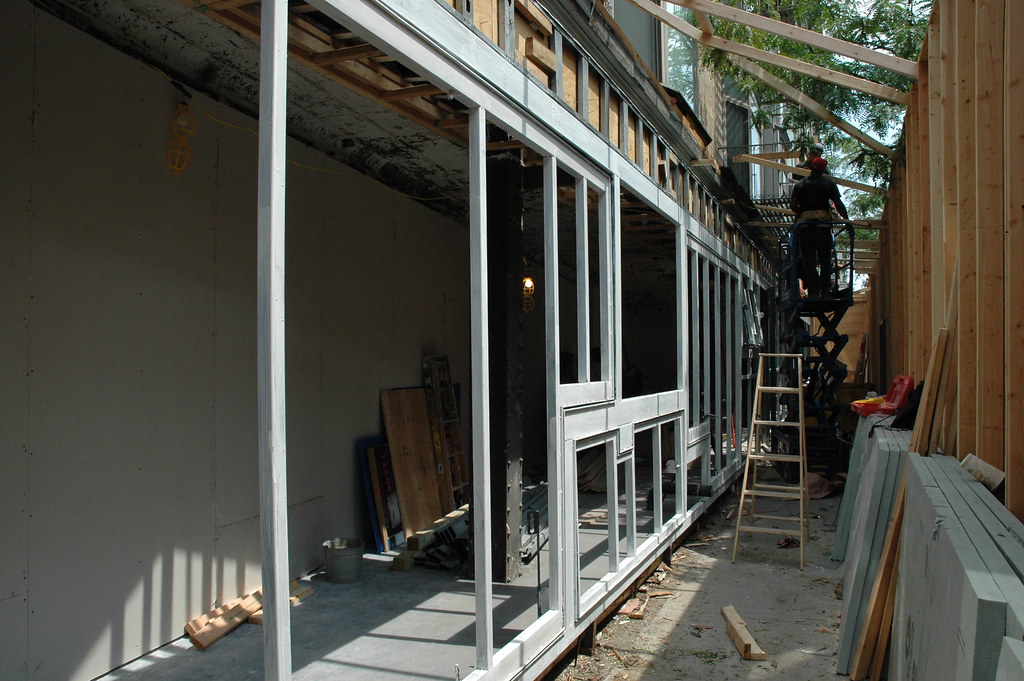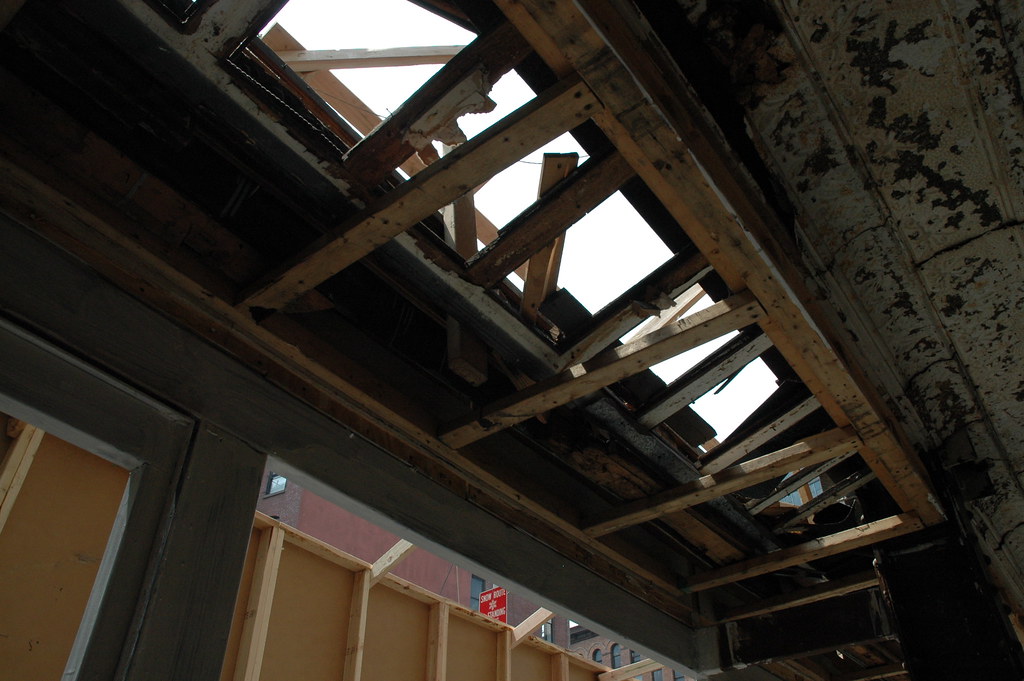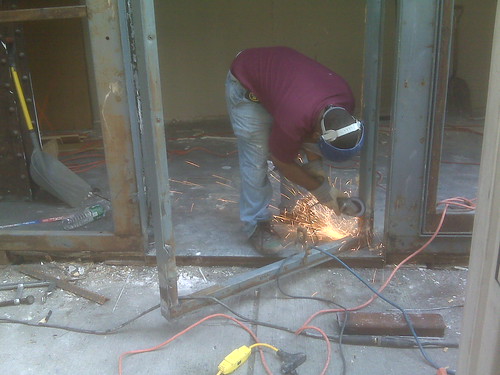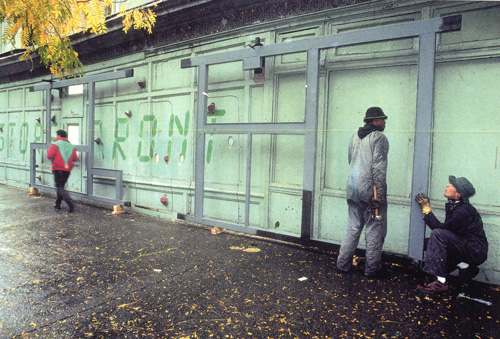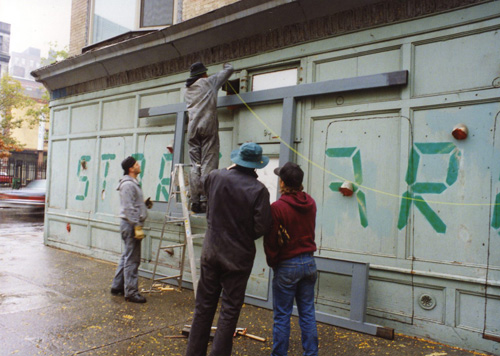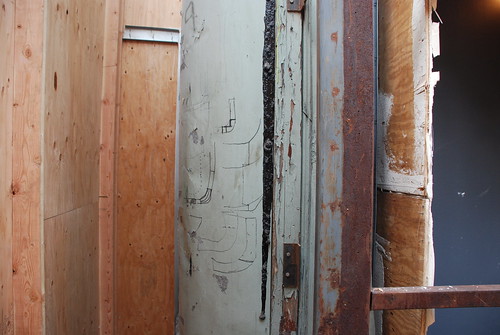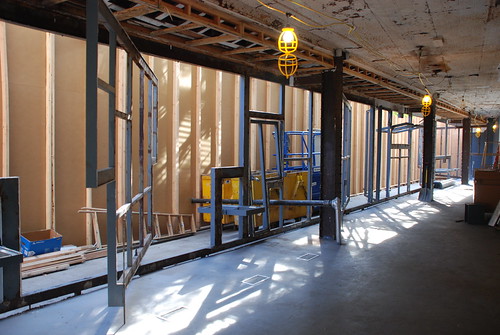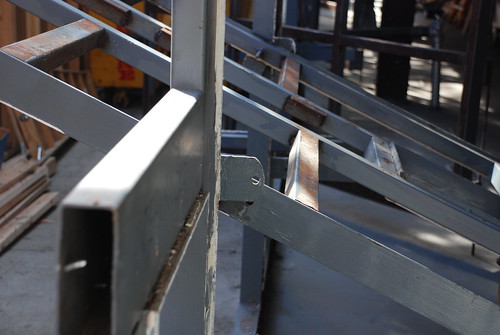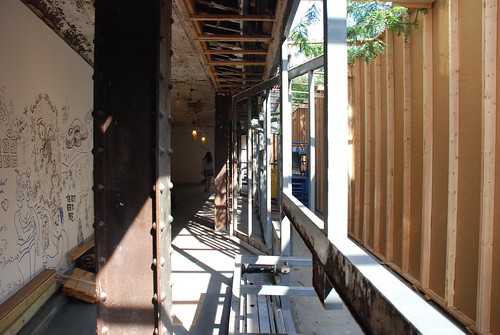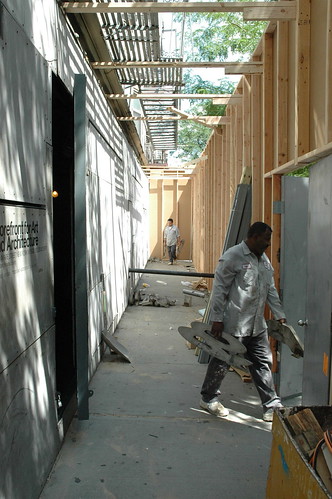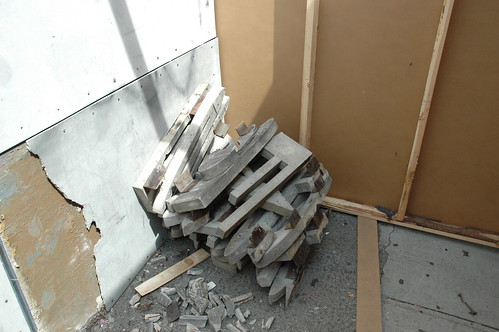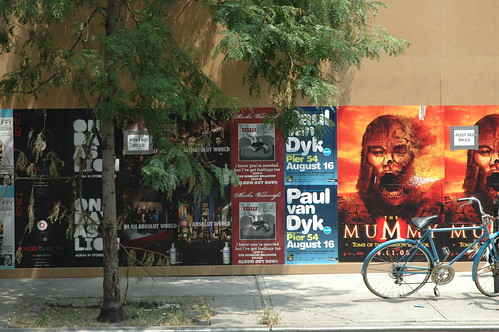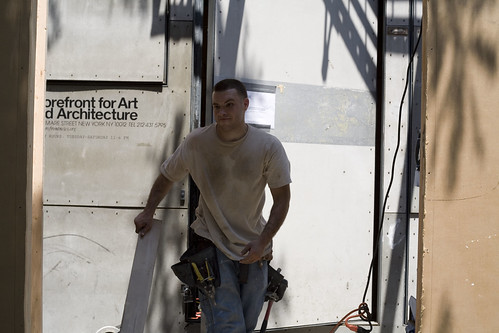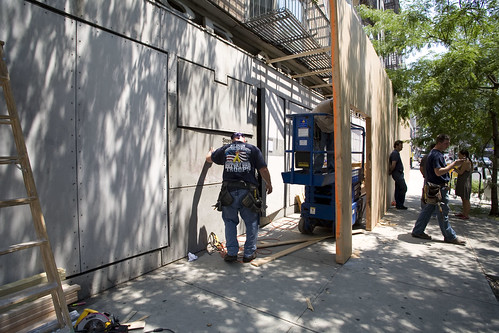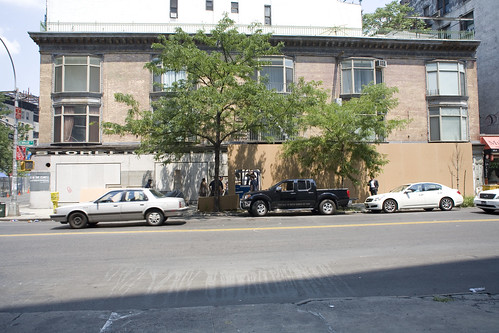Our number one option was fibreC, a material produced by the Austrian company Rieder. fibreC is based on purely organic substances - more than 95% of fibreC consists of sand, cement and glass fibres, and it can therefore be completely recycled, unlike fibrecement products. Moreover, its production involves a low use of resources: the production of fibre cement consumes 76% more primary energy than fibreC. Wolfgang Rieder, the CEO of the company, generously agreed to provide enough 8mm fibreC to clad Storefront’s façade. The panels are on their way over from Austria now – will be arriving in mid-August.
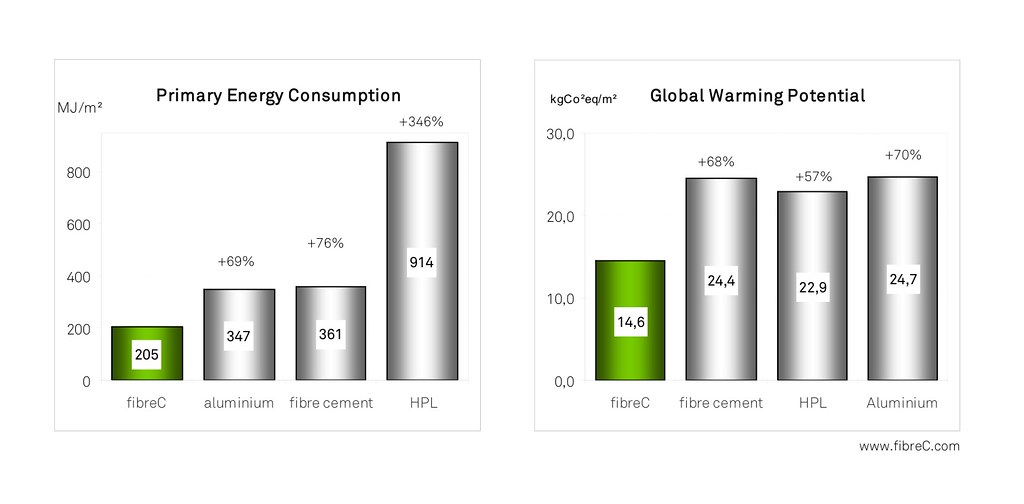
fibreC is a concrete panel reinforced with glassfibres. Therefore, it combines the advantages of the two in a single material – it is as moldable and durable as concrete, but thanks to the glassfibres it is also thin-walled, fireproof and light-weight. It’s been used in some pretty exciting and innovative projects recently built around the world:
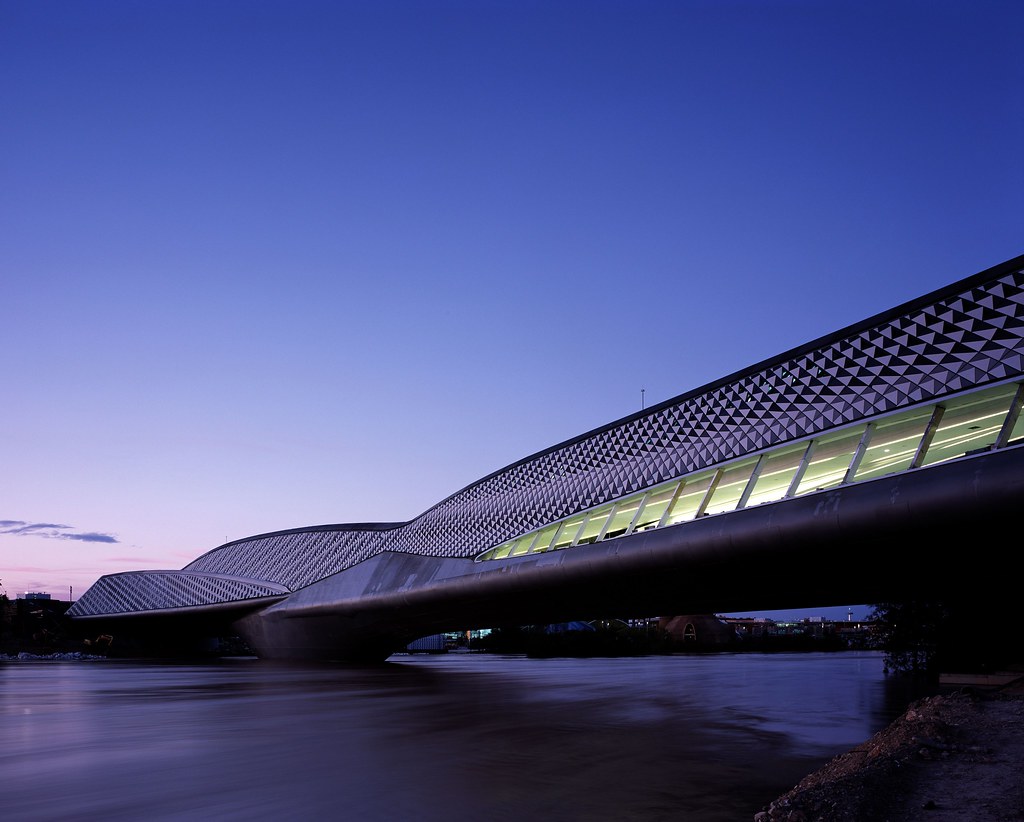
Zaragoza Bridge Pavilion by Zaha Hadid
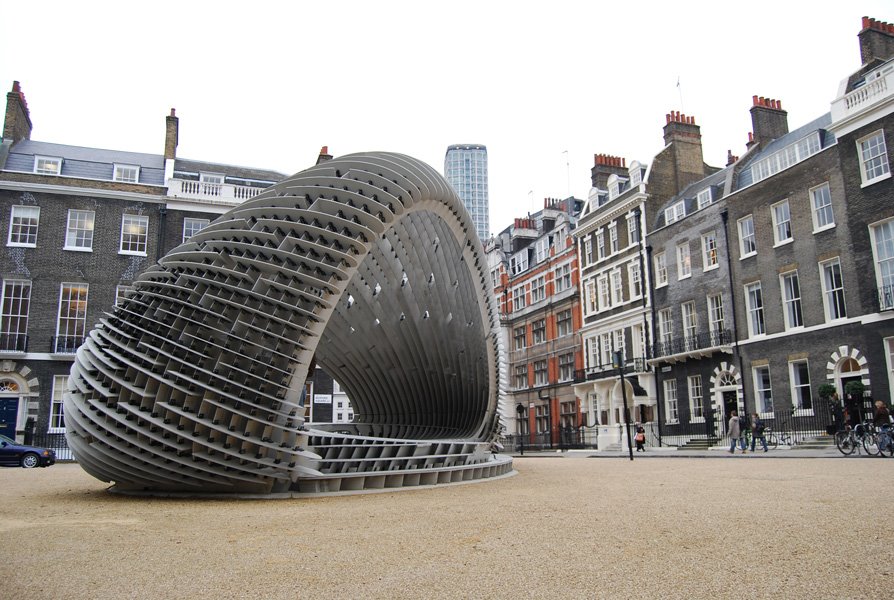
DRL TEN Pavilion by Alan Dempsey and Alvin Huang
If you’d like to know more about fibreC, be sure to come along to Wolfgang Rieder’s lecture at Storefront on 25th September, 2 days after the inauguration of the renovated façade.

